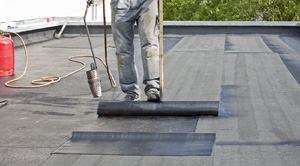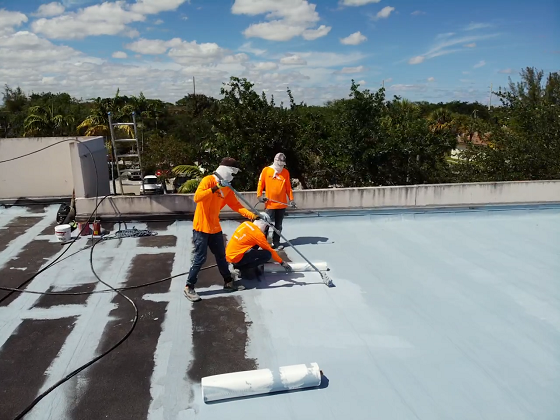Types of Flat Roofs

Types of Flat Roofs
Flat roofs can be a great addition to any building. They offer extra outdoor space that can be used for a rooftop garden, another office room, or commercial HVAC units and solar panels.
They are also durable and easy to maintain. This is why they are so popular among commercial buildings.
Pros and Cons To Flat Roofing
The roof of your building is an important part of the overall look and feel. It protects your property from the elements, and can also be a source of additional space if used properly. There are many different types of roofs, and it is important to understand the pros and cons before making a decision.
One of the most popular roofing systems is a flat roof. These systems are relatively easy to install, require fewer materials than sloped roofs, and are less expensive to repair.
They can also be more energy efficient than pitched roofs, depending on the materials and location of your building. In addition, a flat roof can help keep your air conditioning costs down.
Another advantage of a flat roof is that it creates a lot of usable outdoor space. This can be a great option for people living on narrow lots with little yard space, or for families who wish to set up a garden. It can also be used for barbecues and outdoor lounge spaces.
These types of flat roofs can also be made to look more stylish than their sloped counterparts. This is especially true if the building has a high ceiling.
However, these roofs do have some disadvantages, as well. First, they do not drain easily as pitched roofs do. Without adequate drainage, water will pond and cause leaks.
Second, they do not provide as much insulation as sloped roofs do. This can cause problems if the weather changes or if your building is exposed to extreme temperature changes.
Finally, they do not have as much attic space as pitched roofs. This can be a drawback, especially in large buildings.
The roofs are also prone to rust, so it is important to have them cleaned regularly. This will prevent mildew, algae, stains, and debris from accumulating.
It is a good idea to check with your local roofing company before deciding on a flat roof for your building. They can offer advice and recommendations on which roofing material is best for your needs. They may even be able to install the system for you.

Torch Down Types of Flat Roofs
Torch down roofing is an alternative to asphalt shingles for flat roofs. It uses modified bitumen that’s rolled out over the surface of the roof, then heated by a propane torch to adhere to the surface and create a waterproof seal.
The process is more labor-intensive than traditional shingles, but the materials are more resistant to fire and UV rays. The membranes can last up to 20 years, depending on the type of ply and installation method.
In addition to a high level of durability, the roofing material also offers excellent protection against wind and rain storms. The heat-resistant compound also doesn’t produce noxious fumes like traditional tar and gravel roof materials do.
When a Bowie contractor installs a torch down roofing system, they first lay down insulation and a vapor barrier to prevent moisture problems in the roof. Next, the professional will lay down an overlay board that acts as a support layer for the membrane. This is a critical step that needs to be carefully applied to avoid ponding, which is when water pools on the surface of the roof.
Insulation is especially important for cold-weather homes or buildings, as it keeps the interiors warm and prevents condensation from forming on the outside of the building. It can also reflect sunlight, preventing it from getting too hot inside and causing rot or other damage.
Your Bowie contractor may use a heat fusing method to attach the base sheet to the overlay board or adhesive, and they will make sure that it’s placed correctly so that there are no gaps between the membranes. This is a crucial step to prevent leaking and other problems.
An overlay board is a crucial part of the roofing process, as it ensures that the layers of the membrane will adhere to the roof surface and prevent water from collecting underneath the roofing material. A poorly installed board can lead to a roof that isn’t level, which may cause the membranes to sag and leak.
The process for installing a torch down roof takes some skill and experience to get right. It is recommended that you hire a professional with a fire operating permit and plenty of experience to do the job safely.
Drainage Systems
Flat roofs are attractive and long-lasting, but they’re also prone to water damage. Without the right drainage, constant pooling can lead to annoying leaks, structural damage, a buildup of debris, and costly deterioration.
Fortunately, there are several options for flat roof drainage systems available on the market. Some are more effective than others, and each one can work in different circumstances. The type of drain system you choose will depend on the layout and design of your building.
Gutters and downspouts are a popular choice because they’re inexpensive, easy to install, and require very little maintenance. They’re also resistant to freezing in the winter, and they provide a clean, safe path for water to flow away from your home’s foundation.
However, they can become clogged with debris and must be regularly cleaned to keep them working properly. This is an important step in maintaining your gutters and downspouts, and should be completed as soon as possible to prevent a serious problem.
Another drainage solution for flat roofs is scuppers, which are small boxed drains that exit through the parapet wall of your roof. These are great for flat roofs that have a slight slope, as they’ll help water and debris move off of the roof easily.
Scuppers are also a popular choice because they’re easy to install, and don’t require a lot of space on the roof. They’re also great for flat roofs that have a curved edging or an encircling wall, as they’ll allow water to be pushed off the ridge of the roof and down into your downspout.
Interior drains, or siphonic drainage systems, are another common choice for flat roofs because they’re easy to install and provide a clean, quiet route for water to travel. They’re also more durable than gutter and downspout systems, as they’re buried inside your building.
While a siphonic drainage system may be the most expensive option for your flat roof, it’s one of the best ways to keep water flowing freely and out of your building. It works by allowing water to flow through a series of hidden pipes. This eliminates the need for visible pipework and helps prevent a lot of clutter on your roof.
Ponding
Ponding is a condition that may occur on a flat roof, and it can be an issue for commercial and residential property owners. Although a flat roof should be able to drain off water after a rainstorm, there are instances when water will pool up on the surface of the roof. This is called ponding and can be a problem that needs to be addressed, especially if the water is still there after 48 hours of dry weather.
A flat roof should slope downward slightly to allow for positive drainage. This helps to move the water away from the building and prevent clogging of the roof’s drains. However, some flat roofs are built with slopes that are too great or uneven. This can lead to a lot of problems for the owner, such as leaks and a damaged roof structure.
When a ponding problem arises, the first thing you should do is call a roofing company to inspect the roof. They can then determine the cause of the ponding and make a plan for fixing it.
If the ponding is caused by structural issues, the roofer will have to replace parts of the roof. This can be a costly and time-consuming process, but it will help to solve the problem in the long run.
The other option is to add a scupper box. These are custom-made components that allow water to drain from the edge of a roof. These are often used in conjunction with downspouts to help prevent the ponding from occurring in the first place.
There are several reasons that a roof may pond, including poor design, improper installation, and drain clogging. If these factors aren’t fixed, the roof will eventually deteriorate and need to be replaced.
The most common reason for a flat roof to pond is structural issues, such as wrongly installed joists, beams, or frames. These faulty elements can cause the roof to sag or sink, and it can also put a large amount of stress on the roofing materials. The weight of the water on the roof can chip and tear off the asphalt or other material, which is then at risk of caving inwards.

